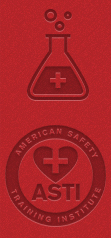Cardiac arrest is nothing but the ultimate 911 emergency. During this period of time, the heart stops the blood circulation inside the body and brain, either by beating so fast or stopping the heart beat altogether. In fact, without abundant oxygen supply, the brain cells start to die! Death occurs in minutes, unless the bystanders take the matters into their hands and start Cardio Pulmonary Resuscitation (CPR).
Doing CPR immediately can make the blood circulate at a steady pace, until the professionally trained and better-equipped responders arrive on the scene to keep the heart back into a stable rhythm.
New and Latest Evidence Backs Better Survival Rates with CPR
In an ideal scenario, a bystander
- Witnesses an individual with a cardiac arrest
- Calls 911
- Starts the CPR process immediately and continues doing it until another person can use an automated external defibrillator (AED)to shock the heart back to the normal rhythm.
AEDs arenothing but the portable devicesthat offers a quick electrical shock to the heart to get it restored to a normal rythm. They’re commonly available in public places like shopping malls. Unluckily, they are often left unused in their cabinets, when if there’s a real emergency. But the overall message for the people is that when they find a patient suffering from a cardiac arrest on the street should recognize and respond to it quickly to save lives.
It’s Totally In Your Hands
If you are ready to help someone who is having a cardiac arrest, then you should watch out two words like ‘recognize’ and ‘respond’.
Recognize
Many people don’t have any idea on cardiac arrest, a heart attack or any fainting spell. A person in cardiac arrest doesn’t breathe, doesn’t have a pulse and can’t respond to you. But someone having a heart attack is usually conscious, breathing and has a pulse as well as can answer your questions.
Respond
Here’s what you need to do when you witness someone in a cardiac arrest:
- Contact 911 right away or have someone else do it. Making a call to 911 means emergency medical responders are on their way to reach you.
- Start chest compressions with your hands only.
- Keep your hand over the other and place them on the breastbone of person, in the middle part of his or her chest.
- Press hard enough to make the chest move inward about 2 inches in depth on adult
- Relax and repeat the process. Do this for 100 times in a minute.
- Keep doing the CPR until someone arrives with an AED, either a bystander who has got it from the nearby business or building or a first responder.
Remember, mouth-to-mouth breathing isn’t necessary if you are doing CPR on a person in cardiac arrest. That’s due to the fact that the blood of the individual has enough amount of stored oxygen in order to keep him or her going for a while.
It’s Time To Get Trained
Many organizations offer CPR, AED and BLS training programs. The notable one among them is CPR Processor. As a reputable resource, it has been providing quality educational practices through online. So you should make a small investment of time and effort to learn CPR with CPR certification courses of CPR Processor. No doubt, their CPR online courses can offer a huge potential payoff by saving a precious life. So make your CPR certification online and respond to a life-threatening at a quick pace and confidence.
For more news and notifications on CPR certification courses, stay connected with us on Facebook, Twitter and Google+!








